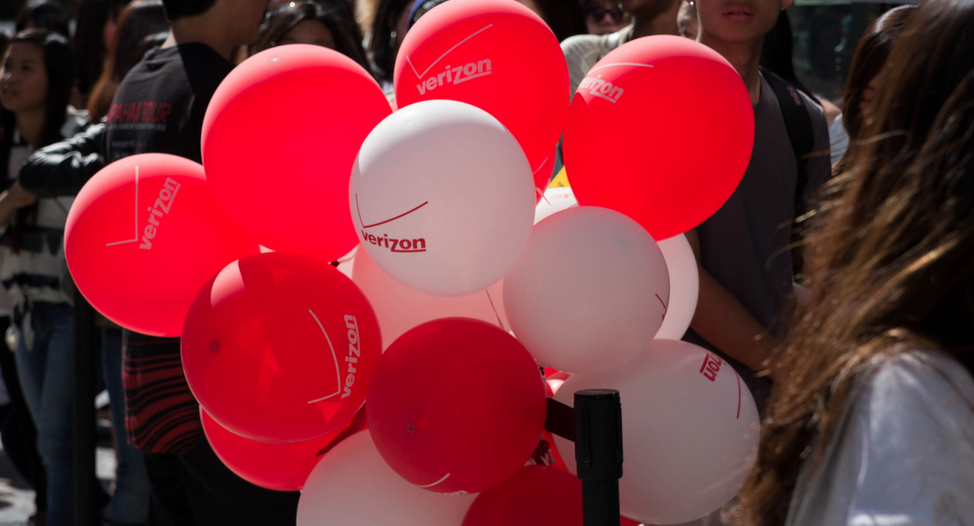Verizon CFO: Getting Rid Of Phone Subsidies Is A Mistake

(Cecee)
Since the dawn of the affordable cellphone market, the business model was the same: Service providers would make phones affordable if you were willing to agree to a 2-year contract. Part of the reason wireless bills were so high, argued providers, was that they had to recoup some of the money lost they paid to manufacturers for customers’ phones.
Then T-Mobile ditched subsidies altogether in 2013 and dropped its rates to reflect the fact that it was no longer footing the bill for subsidized devices. The change made a lot of consumers who own their phone outright — either because they paid full price or because they were no longer in-contract — wonder why they were still paying high wireless rates if their provider was no longer having to make up for the cost of that phone.
Following the T-Mobile change, the three other national wireless companies have each dipped their toes into the unsubsidized water. They all launched so-called early upgrade programs that required members to pay full manufacturers’ prices for devices.
Initially, neither AT&T nor Verizon offered any rate discount for members of their respective programs, which only served to highlight the fact that customers were paying full price for their phones and still helping to pay for all those subscribers with subsidized devices.
Then AT&T finally admitted that people who owned their phones should not be supporting those who don’t, and announced a $15/month discount for customers who were using unsubsidized phones or those who were part of the early upgrade plan.
It wasn’t until last Month that Verizon came to a similar realization, though its $10/month discount only applies to members of the Verizon Edge early upgrade program. Verizon customers who own their phones are still paying the same amount as those who got their phones at the subsidized rate.
Don’t hold your breath that this is going to change anytime soon.
Speaking at a Deutsche Bank-sponsored conference on Media, Internet & Telecom, Conference, Verizon CFO Fran “Don’t Call Me ShamWow” Shammo explained that “We believe that the subsidy model is an extremely good one… It’s done wonders for us in this industry. I think that to abandon it is a mistake.”
Among the reasons for keeping the subsidy/contract model in place, says Shammo, is that customers who pay for their phones on installment plans could be left having to fork over a lot of money to close out their account and move to another carrier.
Of course, it could cost Verizon Wireless customers up to $350 in early termination fees if they want to leave their contract early; plus the customer won’t get back whatever they paid for their subsidized phone.
Shammo also claims that it’s more of a credit risk for the company to get involved in selling phones via installment plans. Perhaps, but there is nothing that says a wireless company needs to get into the phone-selling business. And given that the monthly cost of a service plan and installment payments on a phone is just about the same as the monthly rate most consumers pay (depending on how fancy you go with your device), there shouldn’t be any increased risk that a customer is unable to pay.
The final point, according to Fierce Wireless, is one that makes no sense to us — that Verizon would not want to lose expensive handsets since customers are not signing service contracts to get them.
Perhaps the Fierce Wireless report is misstating what Shammo said, but if that is what he meant, then it’s pure nonsense.
If a customer selects a $480 phone and enters into a 24-month installment plan with the provider, that customer is committed to paying that full $480. If he takes the full 24 months to do so, then it’s just as good to the provider as a 2-year contract and he’s paid the sticker price for his phone. If he leaves early, he still has to pay the balance for the phone. The provider is not losing anything.
Unsubsidized phones are common throughout the rest of the world, and, for better or worse, the U.S. market is destined to go that way in the years to come. It seems like Shammo and Verizon are just denying the inevitable.
Verizon’s Shammo: LTE Multicast opens up new revenue streams [Fierce Wireless]
Want more consumer news? Visit our parent organization, Consumer Reports, for the latest on scams, recalls, and other consumer issues.

